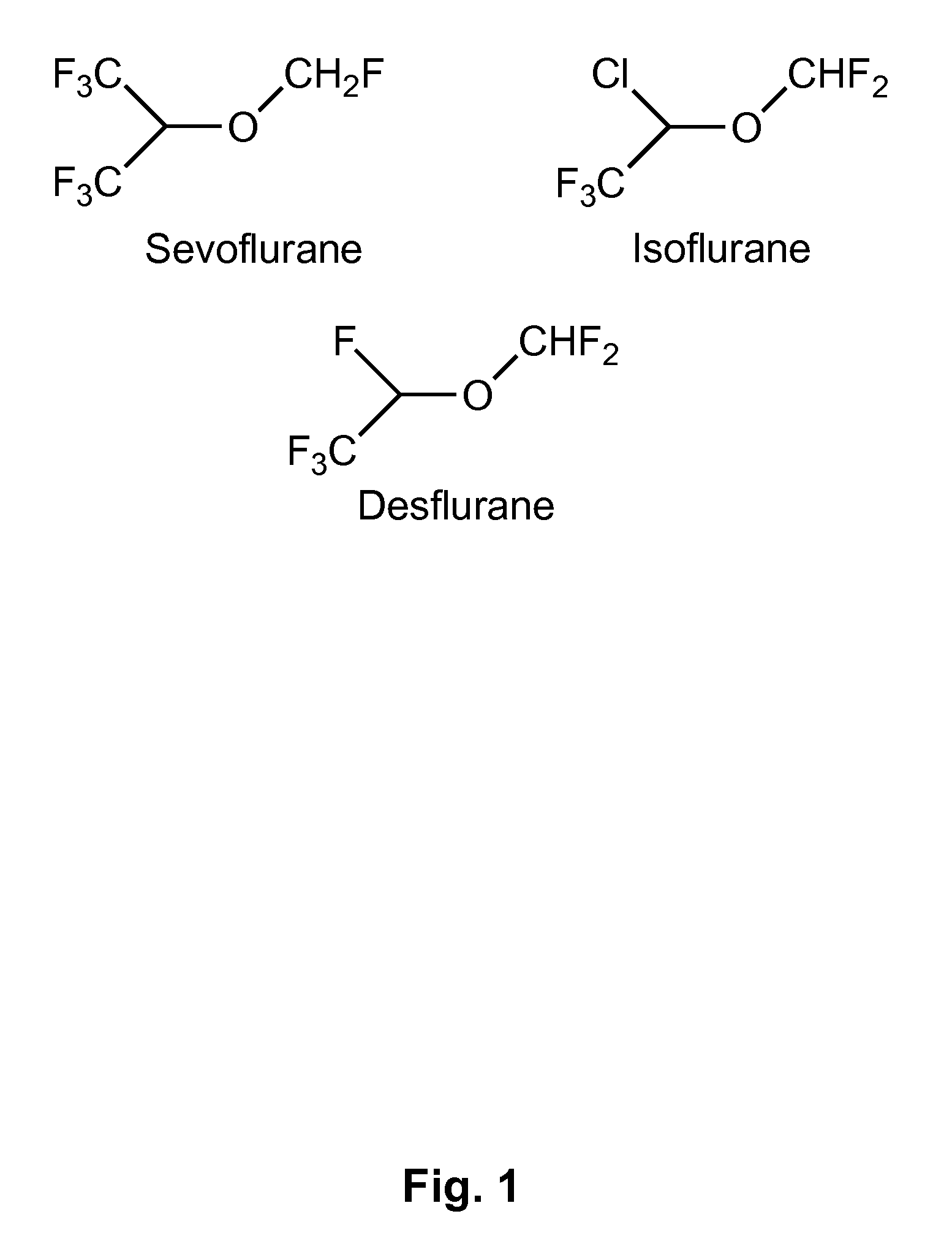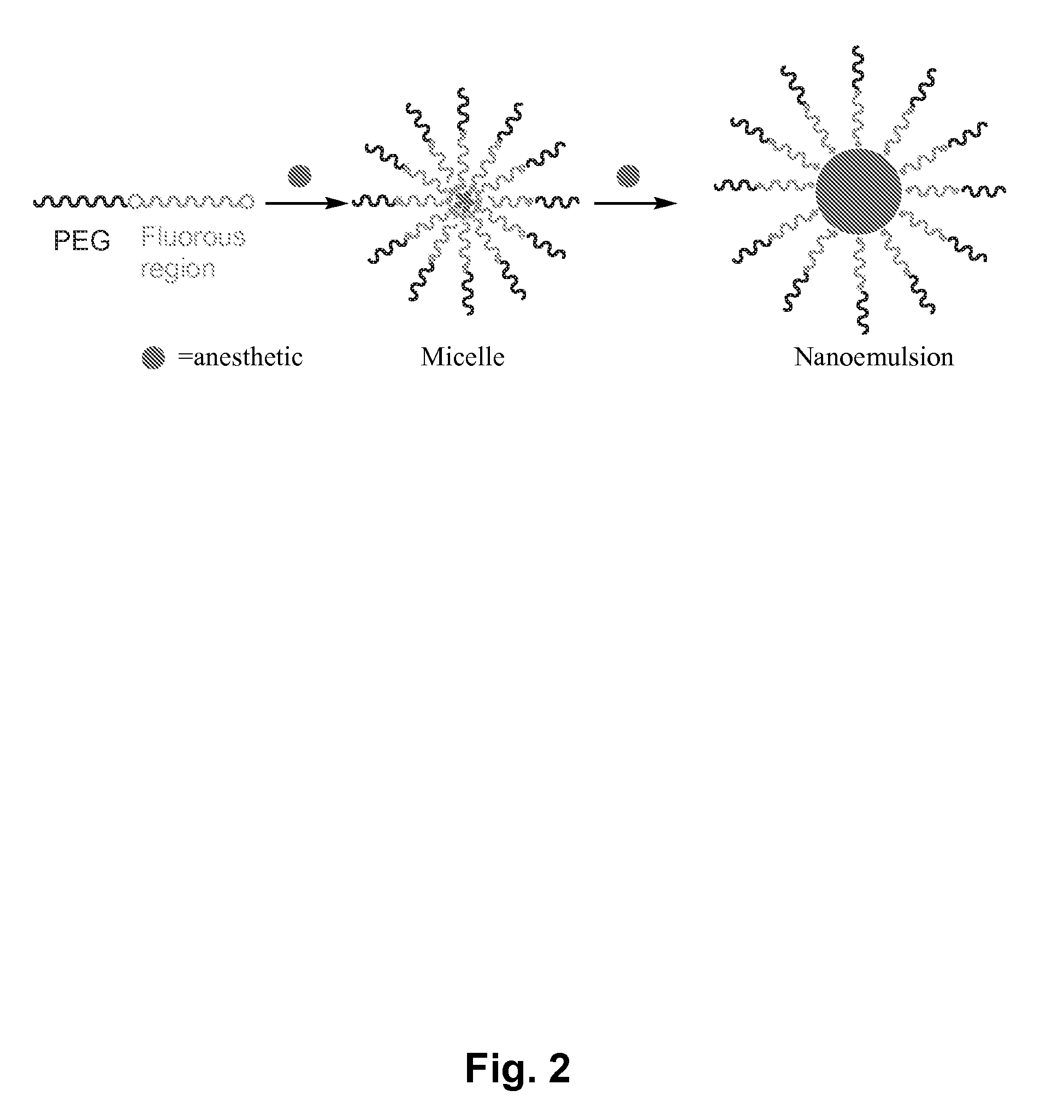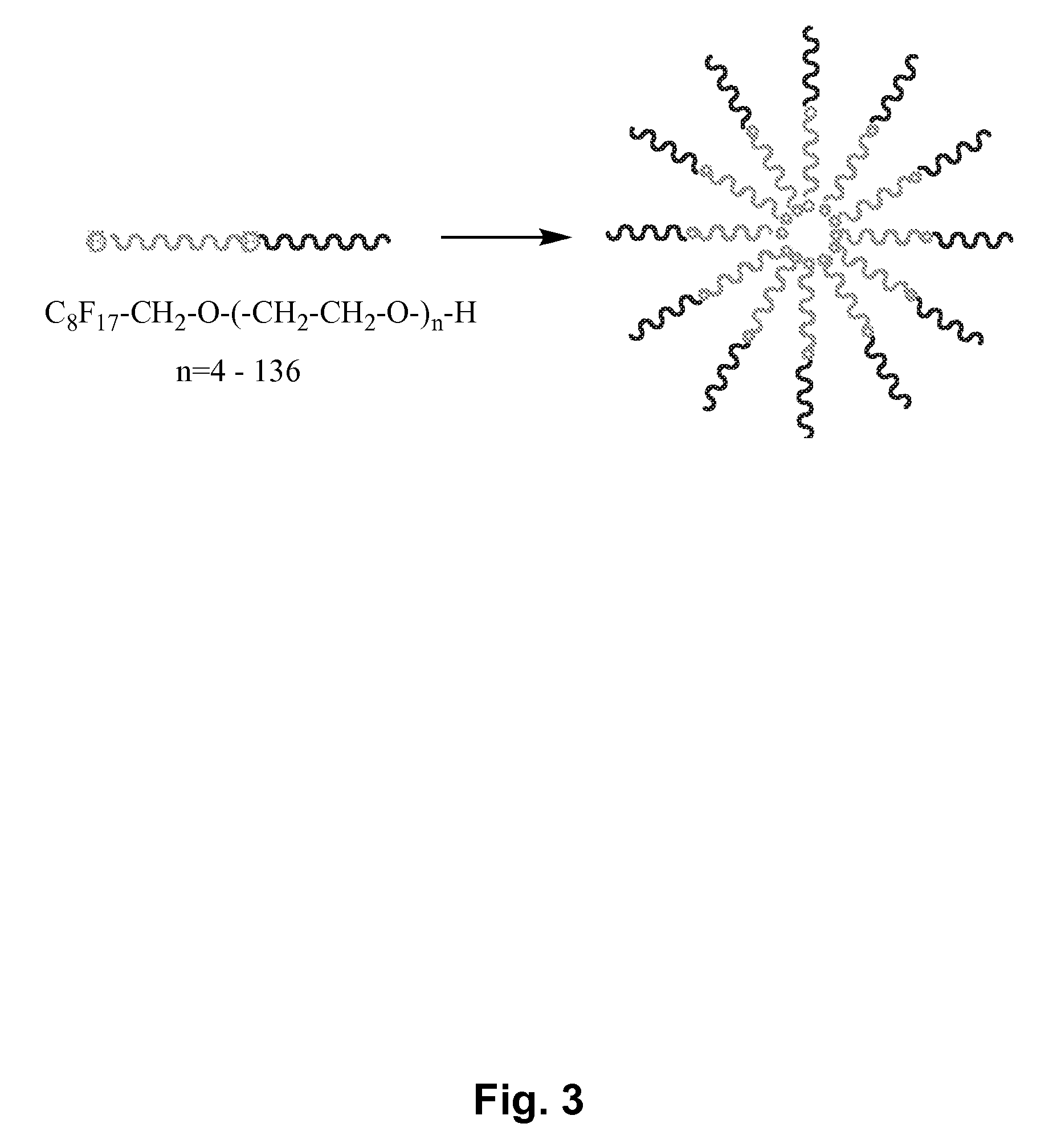Fluoropolymer-based emulsions for the intravenous delivery of fluorinated volatile anesthetics
a technology of fluorinated volatile anesthetics and emulsions, which is applied in the direction of biocide, drug composition, nervous disorder, etc., can solve the problems of insufficient study of emulsion formulations for the delivery of volatile anesthetics, inherent delay in onset, and increased concentration in the lungs more slowly still
- Summary
- Abstract
- Description
- Claims
- Application Information
AI Technical Summary
Benefits of technology
Problems solved by technology
Method used
Image
Examples
example 1
Emulsion-Based Therapeutic Formulations for the Delivery of Fluorinated Therapeutic Compounds
[0110]The physical and chemical properties of organic compounds are deeply affected by the introduction of fluorine substituents. While the introduction of one single atom of fluorine in an organic molecule can already change the properties of a molecule, perfluorination of organic molecules can generate a new phase of liquid matter, the so-called fluorous phase. This phase does not mix with both polar and non-polar hydrogenated phases. The formation of a fluorous phase is at the origin of the unusual behavior of heavily fluorinated molecules and polymers. Perfluorinated polymers have a low surface energy, they are both lipo- and hydrophobic, and they are unsurpassed in their high chemical and thermal stabilities. Their potential for drug delivery has only recently started to be explored. Most importantly, a host of fluorinated molecules, from fluorinated steroids (used as anti-inflammatory ...
example 2
Toxicity Studies on the Anesthetic-Containing Nanoemulsions
[0137]In vitro toxicity studies. In vitro toxicity studies at this stage were carried out by determining the ability of solutions of C8F17—CH2—O—(CH2—CH2—O)136—OH at various concentrations to induce lysis in mice red blood cells. It was found that this semifluorinated block copolymer is completely inert and does not induce any appreciable cell lysis at concentrations ranging from 0.003 mM, below the critical micelle concentration, to 1.8 mM, fifteen times greater than the critical micelle concentration. Procedures were adapted from Lavasanifar, A.; Samuel, J.; Kwon, G. S. “Micelles Self-Assembled from poly(ethylene oxide)-block-poly(N-hexyl stearate L-aspartamide) by a Solvent Evaporation Method: Effect on the Solubilization and haemolytic Activity of Amphotericin B” J. Control. Rel. 2001, 77, 155-160.
[0138]In our studies, we show that our formulations safely and very quickly induce anesthesia in rats. The ability of dosing ...
example 3
Fluoropolymer-Based Emulsions for the Intravenous Delivery of Sevoflurane
[0140]The intravenous delivery of halogenated volatile anesthetics has been previously achieved using phospholipid-stabilized emulsions, especially with Intralipid. However, fluorinated volatile anesthetics, such as sevoflurane, are partially fluorophilic and do not mix well with classic non-fluorinated lipids. This effect limits the maximum amount of sevoflurane that can be stably emulsified in Intralipid to 3.5% v / v. This is a significant limitation to the potential clinical use of Intralipid-based emulsions.
[0141]The present Example demonstrates formulation of a 20% v / v sevoflurane emulsion using a novel fluorinated surfactant and stabilizing agent. The Example also shows the effectiveness and therapeutic index of the present emulsion-based formulations by administering it to male Sprague-Dawley rats via intravenous injection into the jugular vein. The median effective dose to induce anesthesia (ED50), media...
PUM
| Property | Measurement | Unit |
|---|---|---|
| concentration | aaaaa | aaaaa |
| diameter | aaaaa | aaaaa |
| diameters | aaaaa | aaaaa |
Abstract
Description
Claims
Application Information
 Login to View More
Login to View More - R&D
- Intellectual Property
- Life Sciences
- Materials
- Tech Scout
- Unparalleled Data Quality
- Higher Quality Content
- 60% Fewer Hallucinations
Browse by: Latest US Patents, China's latest patents, Technical Efficacy Thesaurus, Application Domain, Technology Topic, Popular Technical Reports.
© 2025 PatSnap. All rights reserved.Legal|Privacy policy|Modern Slavery Act Transparency Statement|Sitemap|About US| Contact US: help@patsnap.com



